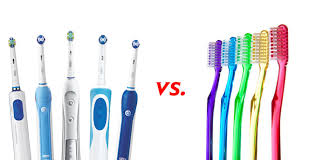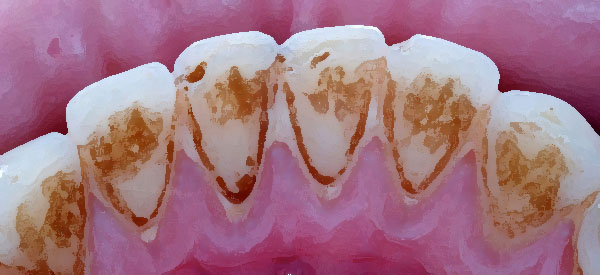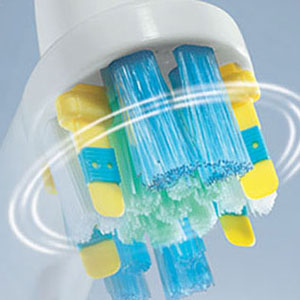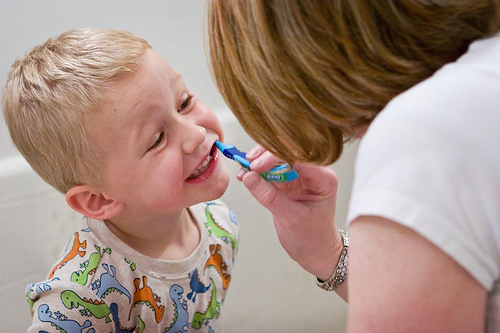It’s the age-old question dentists hear all too often: are electric toothbrushes really better than manual toothbrushes? Funnily enough, this question is actually really easy to answer: no. Both are equally effective BUT only if they are both correctly used with the proper technique. So the real question is not which is better, but rather what is the correct technique to brushing teeth?

Correct Technique
Plaque is a biofilm of bacteria that attempts to attach onto the surface of teeth – tooth brushing aims to combat and prevent bacteria from sticking and becoming plaque over time. In order to do this, whether or not you’re using manual or electric, you need to brush close to the gum to remove the plaque from the gingival margins WITHOUT pressing too hard and causing damage to the gums (i.e. gum recession). Make sure to brush every surface of each tooth, and use floss in the areas that the toothbrush can’t reach (i.e. the spaces in between your teeth).

Manual vs Electric
| Manual | Electric |
| You can have total control of how you brush your teeth. | Electric toothbrushes are a great help for people with limited dexterity due to arthritis or physical disabilities. |
| Manual toothbrushes are much cheaper to buy. | Kids love the look and feel of electric toothbrushes. They are usually so colourful and come in all different shapes and sizes. It gets a lot of kids excited to brush their teeth and it’s a nice introduction to oral hygiene for kids. |
| You can respond more readily to twinges and reduce the pressure applied to sensitive teeth and gums when necessary. | Electric toothbrushes have power rotation that helps loosen plaque. |
| Manual toothbrushes are easy and convenient to pack in your travel luggage. | Electric toothbrushes come with in-built timers that indicate every 30 seconds and the 2 minute mark so you can brush each quadrant of your mouth evenly in an equal amount of time. |

Additional Tips and Information
- It’s recommended to replace your toothbrush or brush head every 3 months.
- With a manual toothbrush, look out for a small head (which will help you access the molars in the back of your mouth) and soft bristles (which are much kinder to your gums than medium or hard bristles).
- Ideal times to brush your teeth are after breakfast and before going to bed.
- Don’t forget to brush your tongue! The tongue acts likes your body’s sponge and it can get pretty filthy.
- Use fluoridated toothpaste, especially with your kids whose teeth are still growing and developing. Fluoride has been proven to help protect and strengthen teeth.
- If your kids are 9 years old or younger, you should supervise them when they are brushing their teeth so you can help them clean all teeth surfaces. Young kids generally have difficulty brushing their back molars or their lower bottom teeth right next to their tongue due to limited manual dexterity. Let your child brush and floss their teeth first, and then you can go over them again in case they missed any spots. This helps your kids develop a good habit during the maturation of their manual dexterity while you can simultaneously ensure that their teeth are clean.

At the end of the day, regular correct brushing and flossing is the key, not the gadget used. Hopefully this article has helped you choose which one is right for you to keep on smiling!
